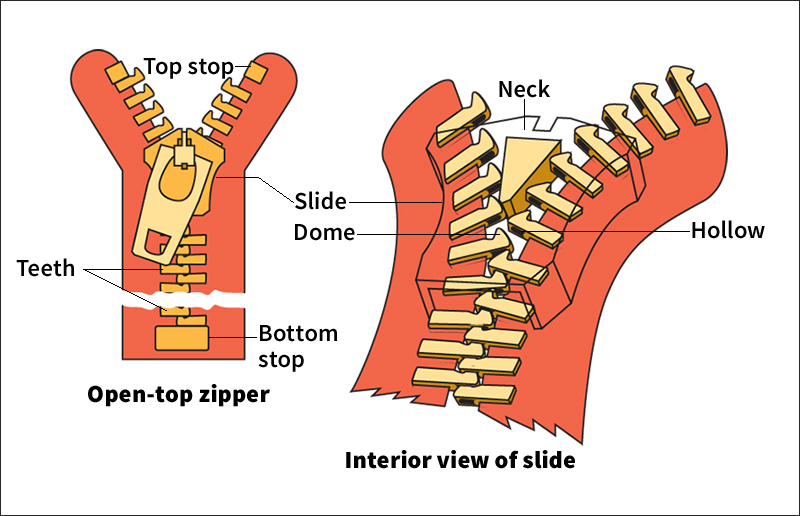Zipper is a slide fastener. Most zippers have two rows of metal or plastic teeth that interlock. Each tooth has a raised dome on top and a hollow on the bottom. A slide draws the teeth together and meshes the domes into the hollows. The teeth can only be locked or unlocked in sequence. They remain locked until the slide is drawn back. Some zippers have plastic spirals instead of rows of teeth.

In 1893, Whitcomb L. Judson of Chicago patented an early form of the slide fastener. Judson’s fastener used hooks and eyes. In 1917, Gideon Sundback obtained a patent on a new type of hookless slide fastener. His design used meshed teeth like modern zippers. These early zippers were mostly used in small personal items, such as tobacco pouches and gloves. The United States Navy also used zippers in flying suits during World War I (1914-1918). In 1923, the B. F. Goodrich Company gave the trade name Zipper to rubber boots that had slide fasteners. Zippers became common in everyday clothing during the 1930’s.
